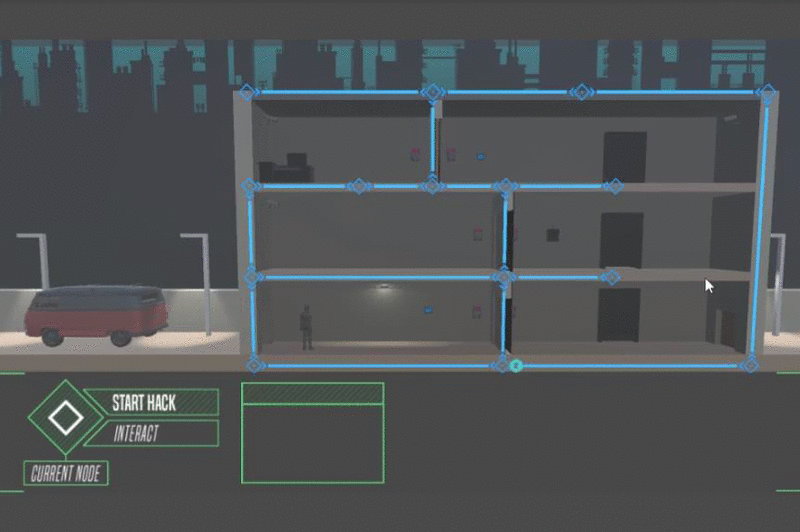The Jungle level features ropes that the players can swing on. They're built as hinge joint systems in Unity physics, and took the bulk of my development time to get right because of the networked environment.
To understand why this was so difficult, we need to look at the limitations of Unity's networking out of the box, or at least what its limitations were in the spring of 2014 when these were first in development. The main problem is that Unity doesn't come with a way to smoothly move realtime objects across the network. 15 network frames per second just isn't enough for anything other than painfully jagged movement without some kind of enhancements. So, the first thing I had to do was create an interpolation system, causing the first frame of synchronization to be cached but not applied, and then spending each successive network frame interpolating transform data from the previous to the current just in time for a new frame to arrive, creating a one-frame-back illusion of smooth motion. Pretty typical solution there.
Making the ropes work with players attached was a little trickier. I went with an authoritative server networking model, meaning that the machine hosting the game is the sole arbiter of where everything really is in the game world. Synchronizing physics required some very tricky dancing, ultimately requiring client rope physics to be disabled, with the rope segment transforms synchronizing with the same model as the players. However, because the synchronizations didn't all happen simultaneously, the basic approach caused players on ropes to appear as though they were quickly attaching and detaching from each rope. To correct that required us to expand the network event system so that clients could parent the player transform to their designated rope segment, disregarding synchronization interpolation while the player held on.
Adding another layer of complexity, the ropes don't swing themselves - the player swings them. They jump up to the rope while holding the Climb button, attach to the rope at that point, and then their direction controls allow them to start pushing off in a direction. The steps involved to get that working in a networked environment were complicated: A client player grabs a rope, and all other machines are informed. As the player applies force, the host is informed, physics are applied on the host machine, the rope moves, and all clients are updated with the transform data for the moving rope, carrying along the locally parented instance of that network player.
Takeaway: Networked physics are not simple.












































